We again had both a Japanese and western breakfast, but another tour group came in, so the food items disappeared quickly. The kitchen staff did a great job in quickly replacing everything, however, so everyone was happy.
After breakfast we boarded the bus for a trip to Gokayama, a UNESCO World Heritage site. The area is famous for the traditional gassho-zukuri farmhouses, some of which are more than 250 years old.
Gokayama consists of two villages: Suganuma and Ainokura. The houses in the villages are shaped like praying hands, with the slanted thatched roof having an A-line shape, which helps to withstand the heavy snow that falls in the winter. The roofs were constructed without nails, and provided a large open space to cultivate silk worms, which was done years ago to supplement income. Periodically, the thatch on the roofs has to be repaired using pampas grass that is grown and harvested nearby. These homes have remained traditional, and most have not taken on the modern ways. People still live in them, and because of that, tour buses are not allowed to arrive before 8:30 am. The people have gardens for growing vegetables, and there is a convenient store not too far away.
We first visited Ainokura village, the most remote village, with 23 homes. Most of the homes are private residencies, but some have been converted to stores or restaurants.
We climbed up the mountain trail and had a breathtaking view of the quaint village, nestled in the valley between the mountains. The sun was shining once again, and we were able to take off our jackets to enjoy the warmth. We walked down from the mountain and strolled through the neighborhood, admiring the homes and their thick thatched roofs.
We got back in the bus, and on the way to our next stop, Hiro gave us all delicious strawberries from the market we visited yesterday. Very tasty.
Our next stop was a local community center in Ainokura, to try our hands at rice pounding, better known as the art of mochitsuki. Steamed short-grained rice is placed in a large mortar to be pounded by a wooden mallet into paste. The rice is pounded until it is completely smooth and shiny, and paste-like. It is then called mochi which can be cut into different sizes and made into various shapes.
We all had a turn pounding the rice with the wooden mallet. It was a little nerve-wracking, as in-between each pound, the lady kneeling at the side of the mortar, quickly put her hand in between each pound, and reshaped the rice ball before the next mallet hit came crashing down. We were so worried her hand would be crushed , but she’s done it so many times, she would quickly get her hand out of the way. She took a chance with us though, as we were just learning how to manipulate the mallet. Thankfully, no bones were smashed during our attempts at pounding.
Mochi can be either sweet or savory. We sampled the sweet kind. It was delicious, but here’s the dark side of mochi. Hiro told us that people have died eating it, choking to death, as the mochi is very thick and glutenous and can get stuck in your throat. Needless to say, we all chewed our mochi balls very, very, VERY well!
One of the towns around Ainokura, is well known for its Washi paper, and so our next stop was Gokayama Washi no Sato, where we learned how washi paper is made, and we had the opportunity to make our own.
At Washi no Sato, Kozo, a type of mulberry tree, is grown high up in the mountains, and is cultivated to make the washi. After harvesting the Kozo branches, they are steamed in huge vats to soften them and then the bark is peeled off and the branches are cut into strips. The strips are then placed in the snow for bleaching. After that, they are beaten to soften the fibers and then rinsed to get clean. They are picked over by hand to remove any leftover dirt. The fibers are then beaten again to loosen them, and they are mixed with water and Neri, a thickener. This makes the paper strong.
This now thick pulp is scooped from a vat into a screen and the screen is shaken back and forth and sideways so the water drains out. This is done a few times, depending on the thickness desired of the paper. The paper is finally pressed to get the water out and is dried.
We made our own Washi paper by doing the scooping, shaking, and straining over a vat, and then we placed small designs on our paper and waited while it dried. The paper turned out beautiful, and was postcard thick.
We bid our goodbyes and thanks to the folks who helped us make the washi paper, and we went off to a local restaurant for lunch. The lunch was vegetarian with vegetables that were harvested nearby, and included pickled delicacies and tofu. We had a soup with buckwheat noodles and some rice with a delicious sauce on top. It was one of the best vegetarian meals I’ve ever eaten.
After our lunch, the ladies who had served us our meal, performed a dance, while another lady sang a Kokiriko-bushi, or folk song. The lady who sang kept time with bamboo sticks, while other ladies performed a dance with a Binzasara. The Binzasara is an instrument made up of several wooden plates strung together with a cotton cord, with handles at both ends. The stack of wooden plates are played by moving them like a wave. There are exactly 108 plates, meant to protect from the 108 worldly desires in Buddhism. To play the Binzasara, you hold it at both ends and with a flick of your wrist, one side at a time, you do a wave like motion, and the pieces of wood clap next to each other, making the sound.
The dance was very expressive and afterwards, we were given a turn to try the Binzasara. We all did pretty well once we got the hang of it.
After lunch we visited the Murakami House, which was built in 1578 and is the oldest ghasso-style house in the area, and the largest by far. No nails were used in its construction, and all the joints in the second floor and above are fastened with fibers and straw ropes. We were served tea and the owner of the home, who is from the Iwase family, told us all about its history. We watched a traditional dance using the Binzasara, and then we were invited to take a tour of the many levels in the home. Allan went up the steep ladder for the tour, but I’m not a fan of ladders, so I didn’t go.
For dinner we went to a restaurant and had Wagyu beef that we barbecued at the table. The last food to be barbecued was beef intestines. I tried it but didn’t like it – too tough and fatty. The rest of the meal was very good; the beef was tender, and the veggies and soup were very good as well.
I meant to mention in yesterday’s post, that I saw someone throw cherry blossom petals in the air for a photo, so my now new friend on the tour and I decided to do it too. You can see the result at the end of the post.
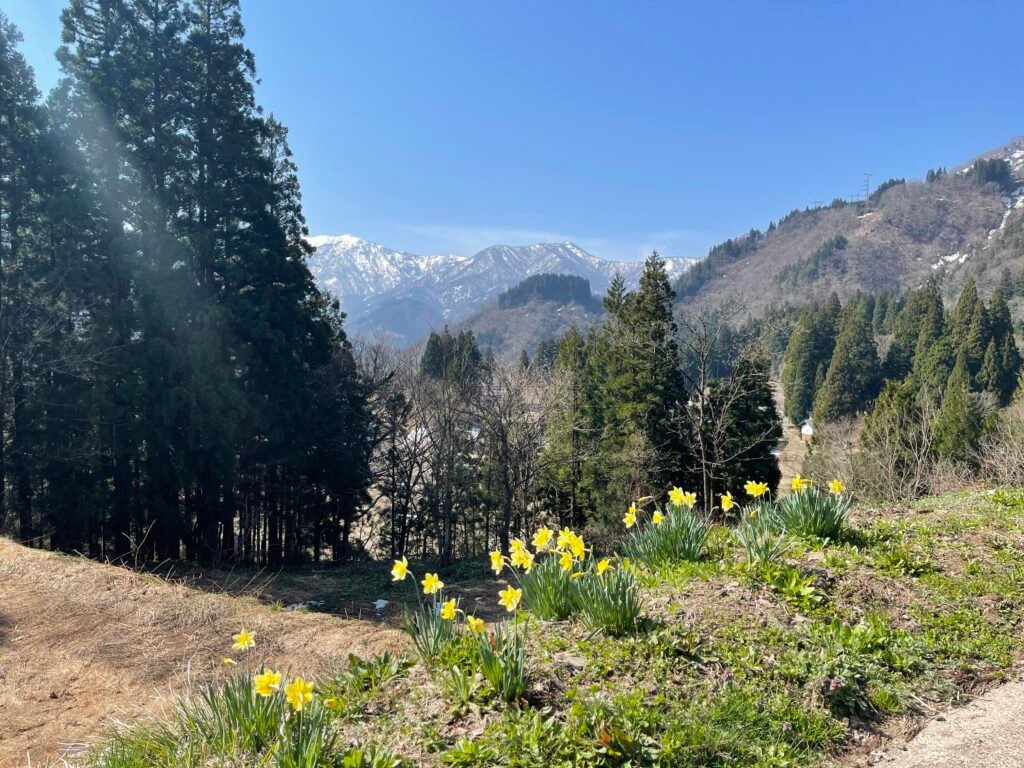
Climbing up the path to view the thatched homes.
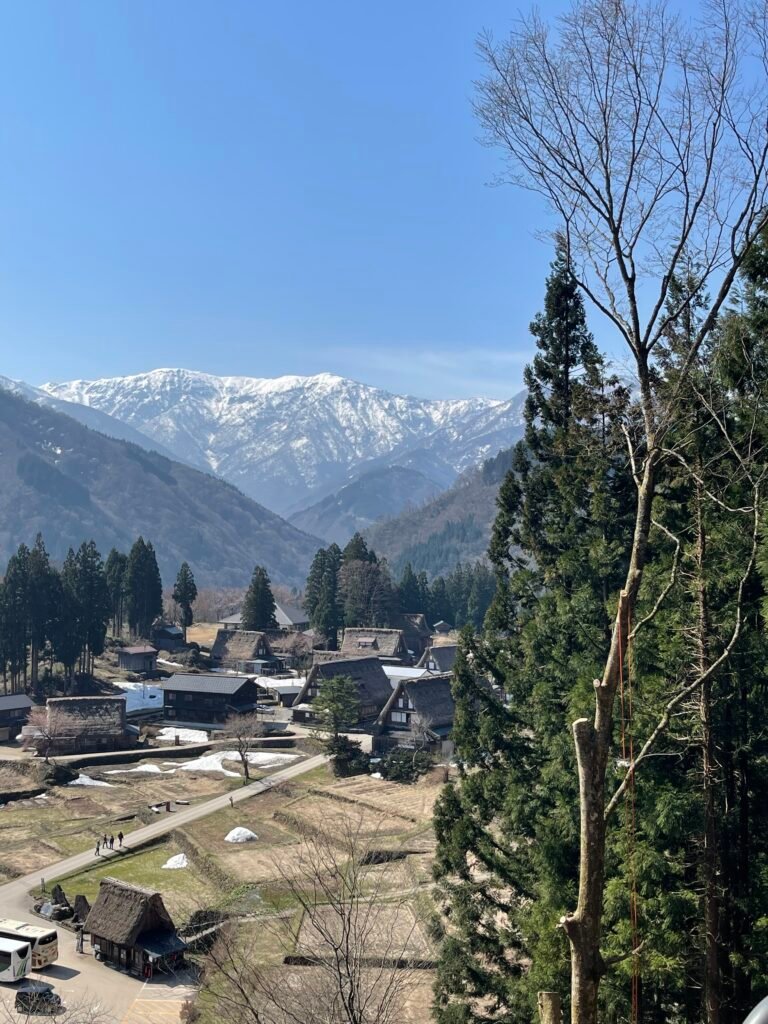
The homes. The countryside was magnificent.
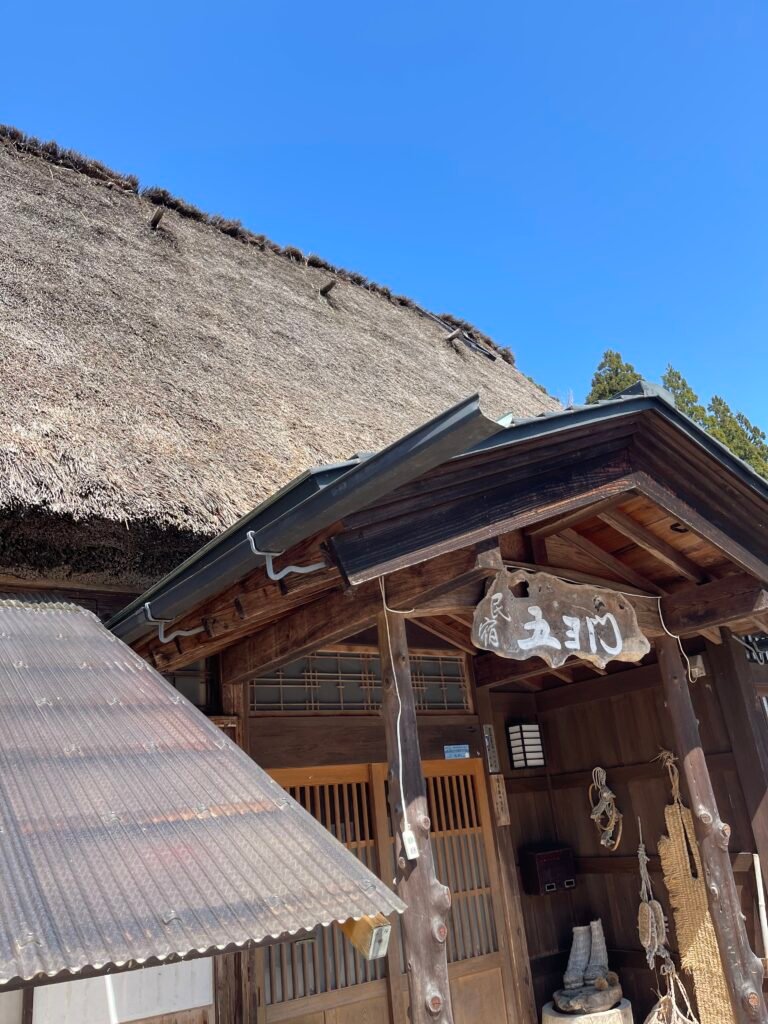
The thatch on the roof
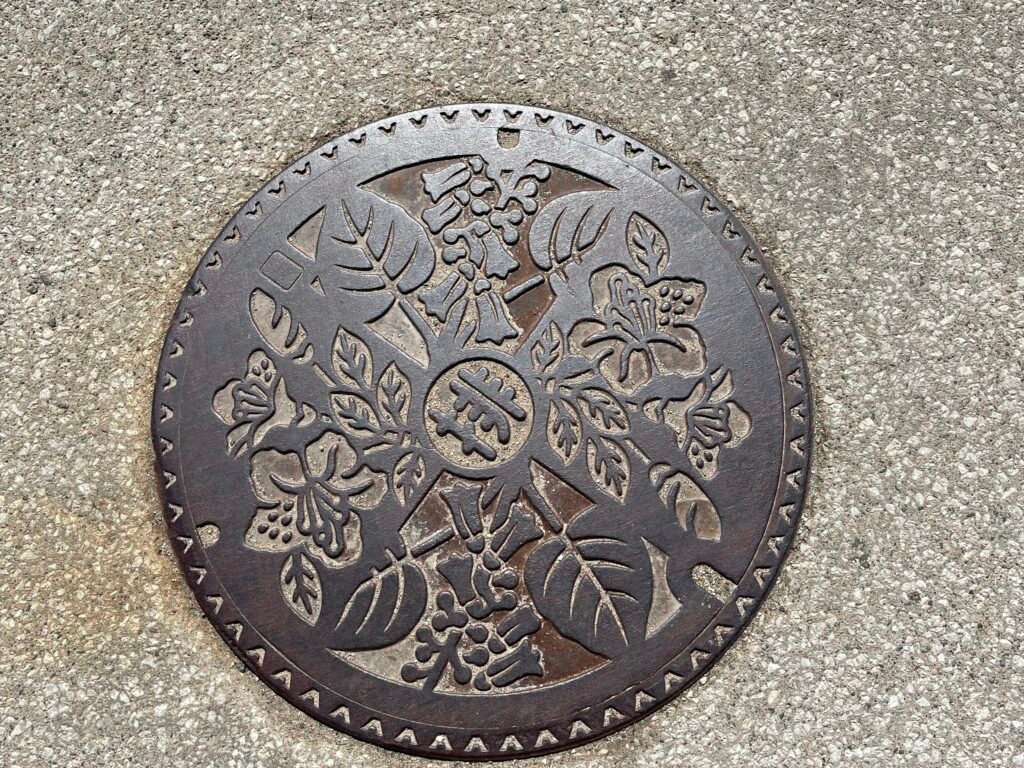
These large metal plates were embedded in the sidewalks
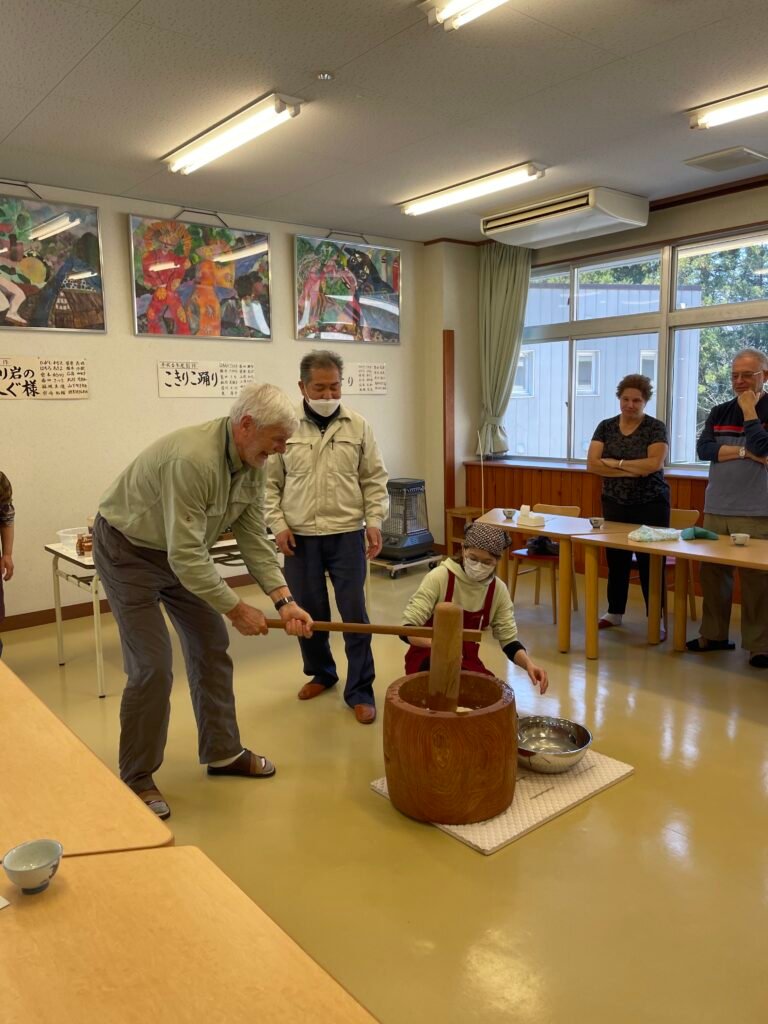
Allan pounding the rice cake
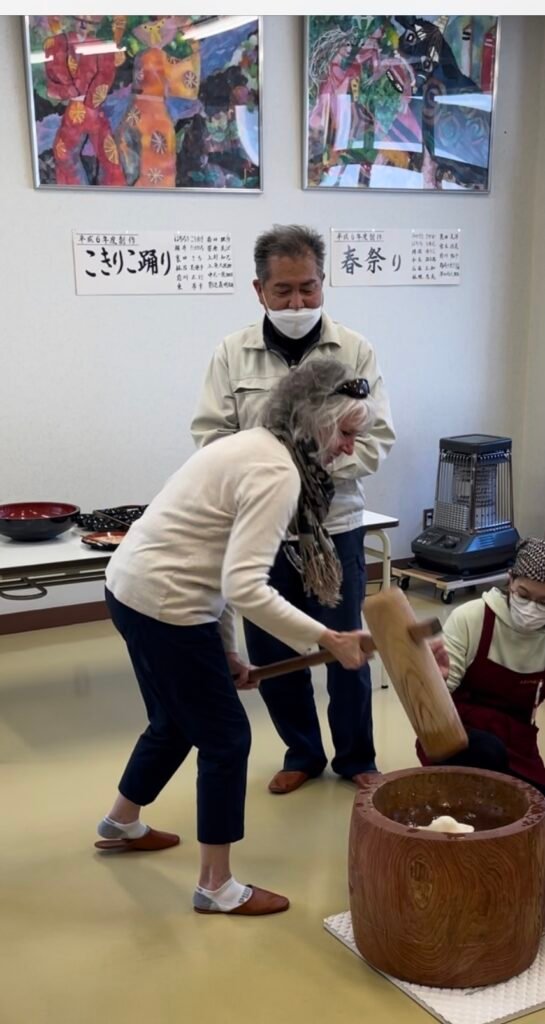
Irene taking a turn
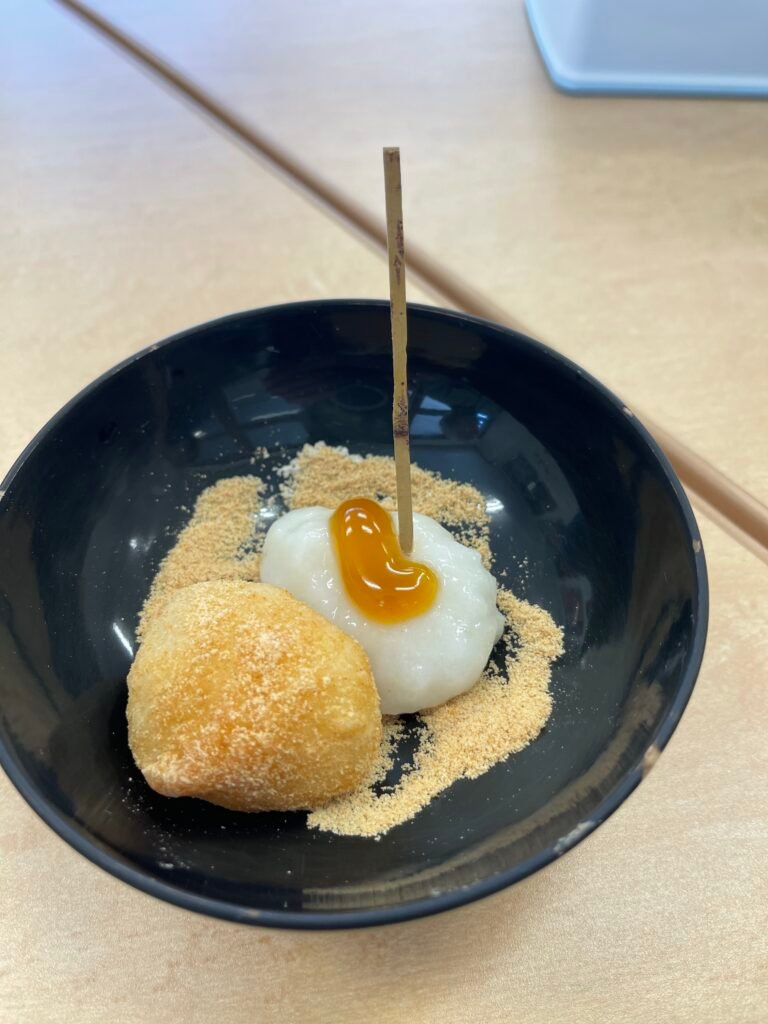
The finished product – mochi

Making Washi paper
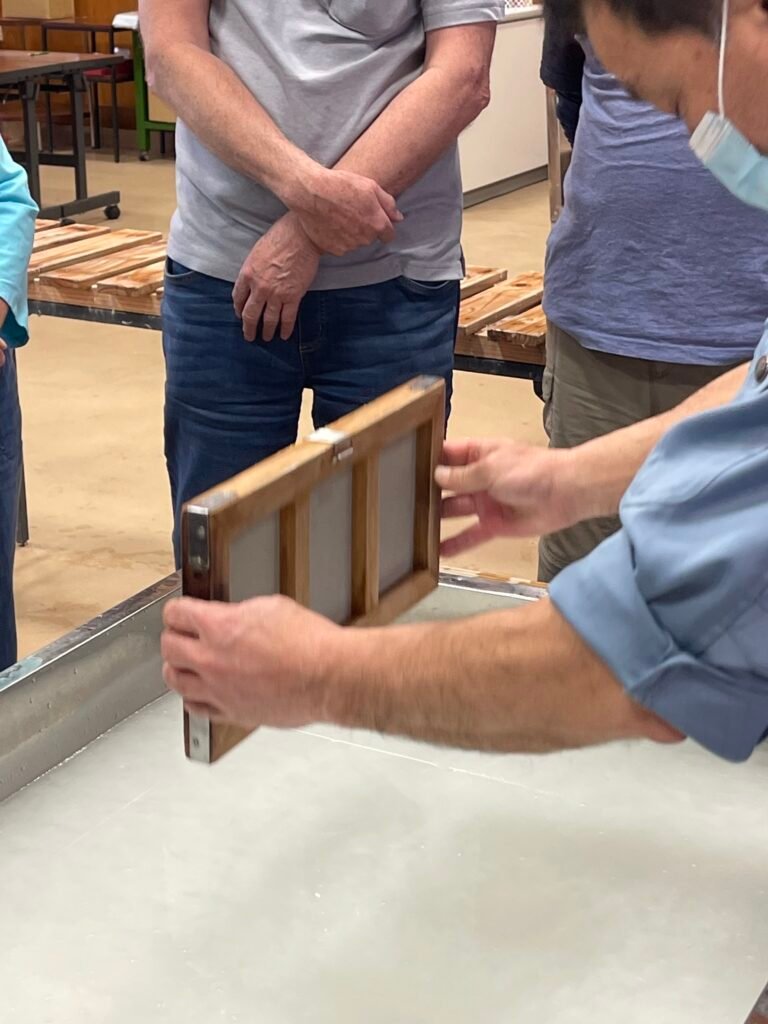
The screen is placed into the vat vertically and then is turned horizontally to scoop up the mixture, kept horizontally and brought back out to allow the water to drain through the screen.
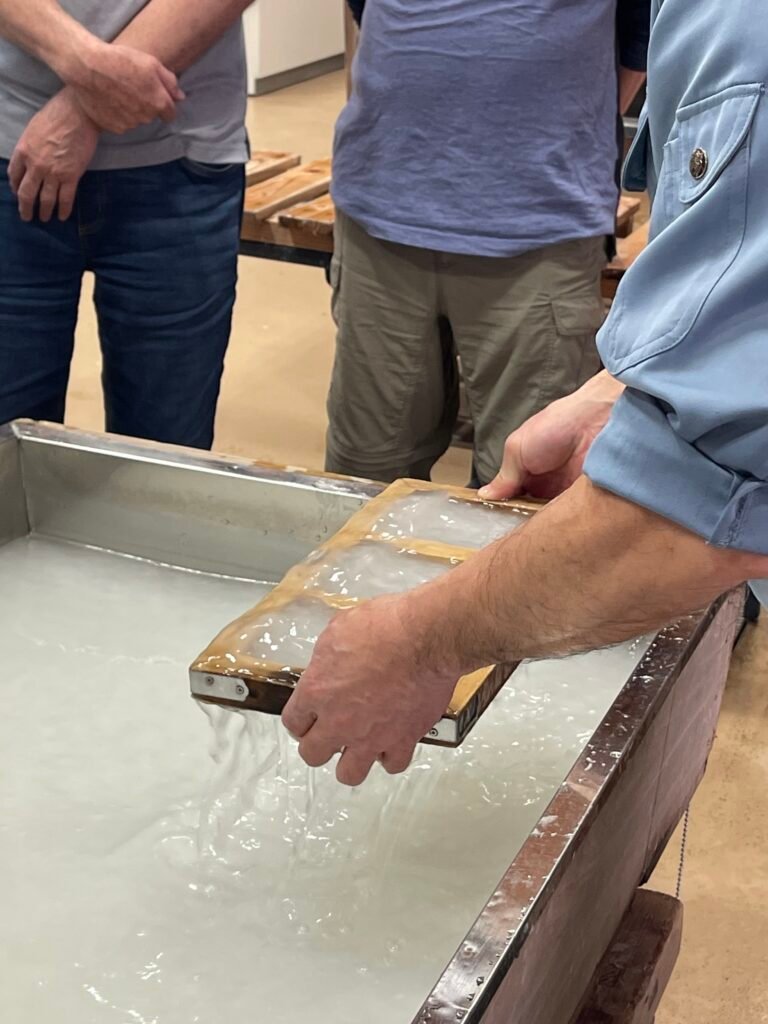
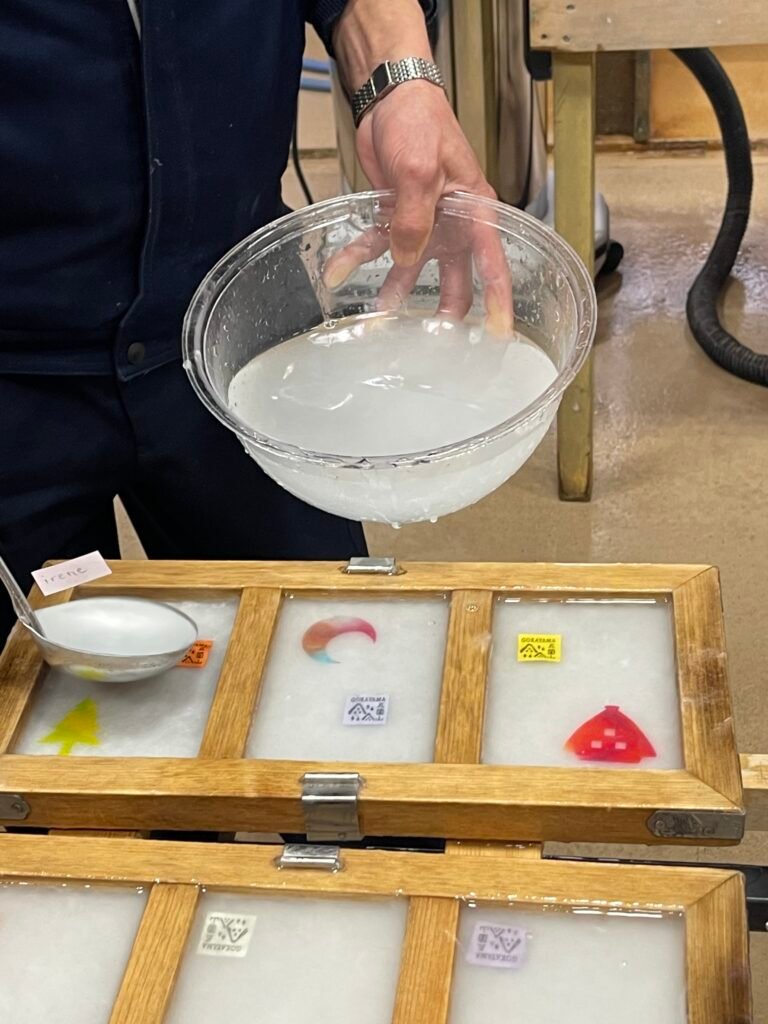
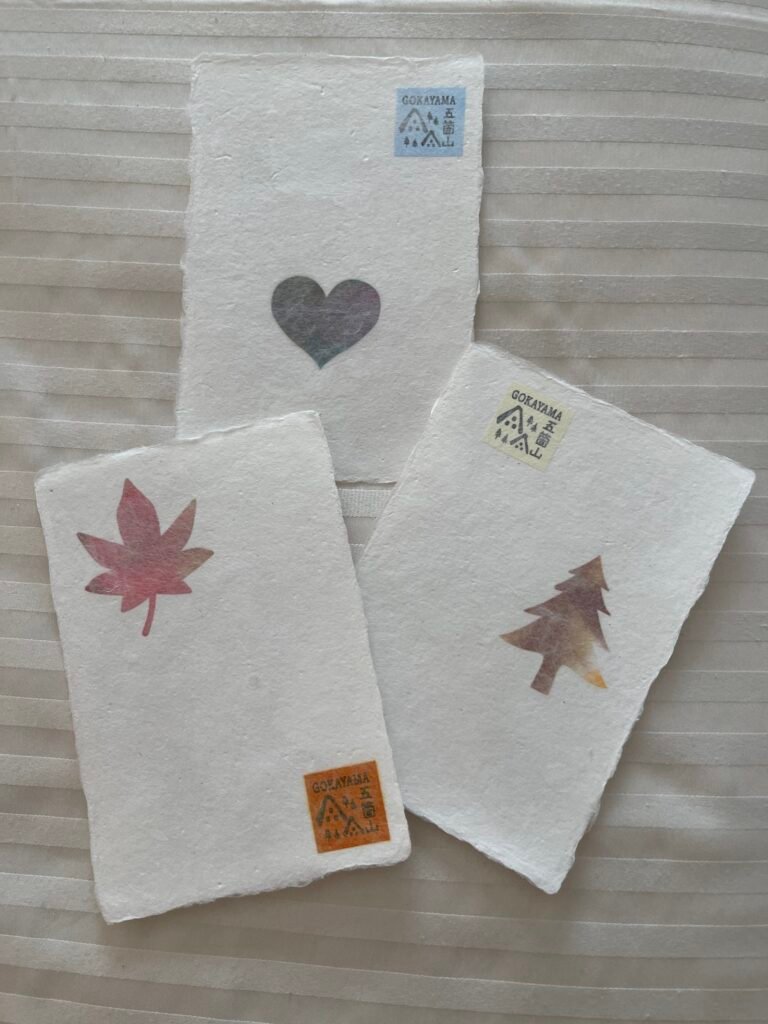
Allan’s cards
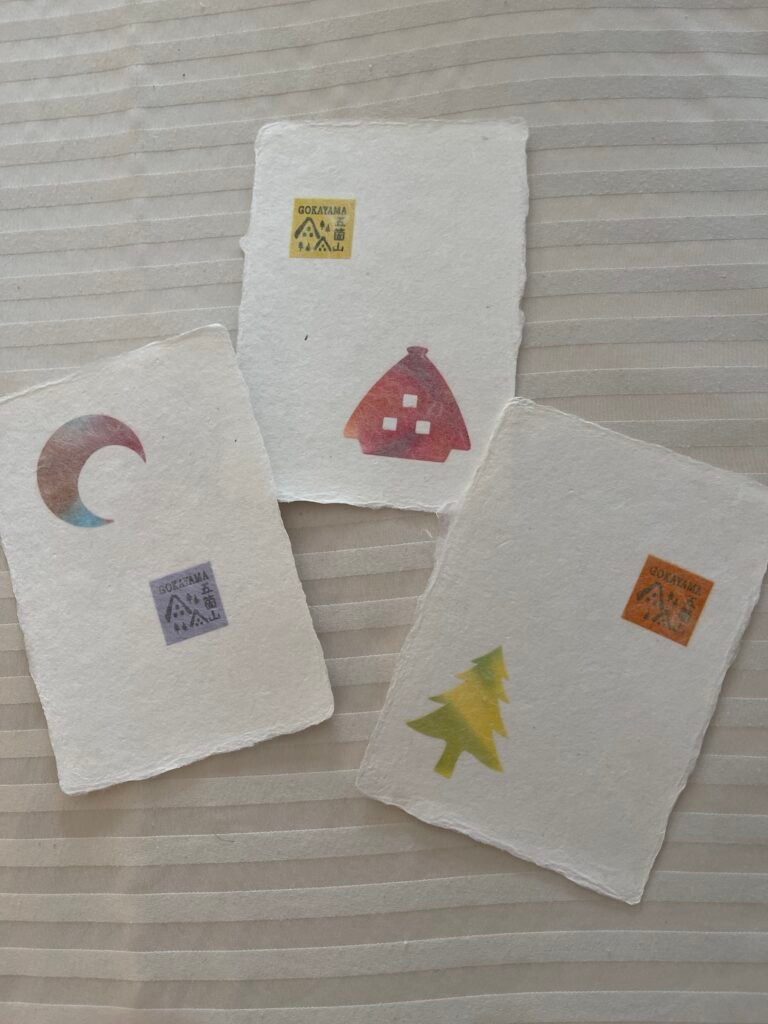
Irene’s cards
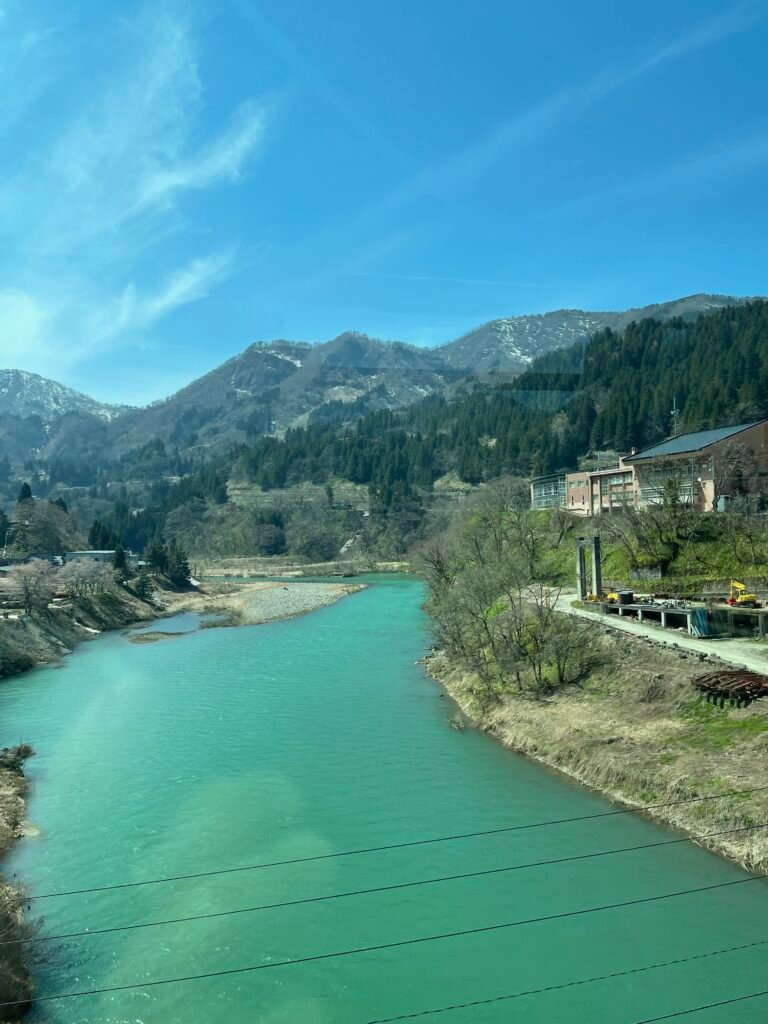
On the way to lunch
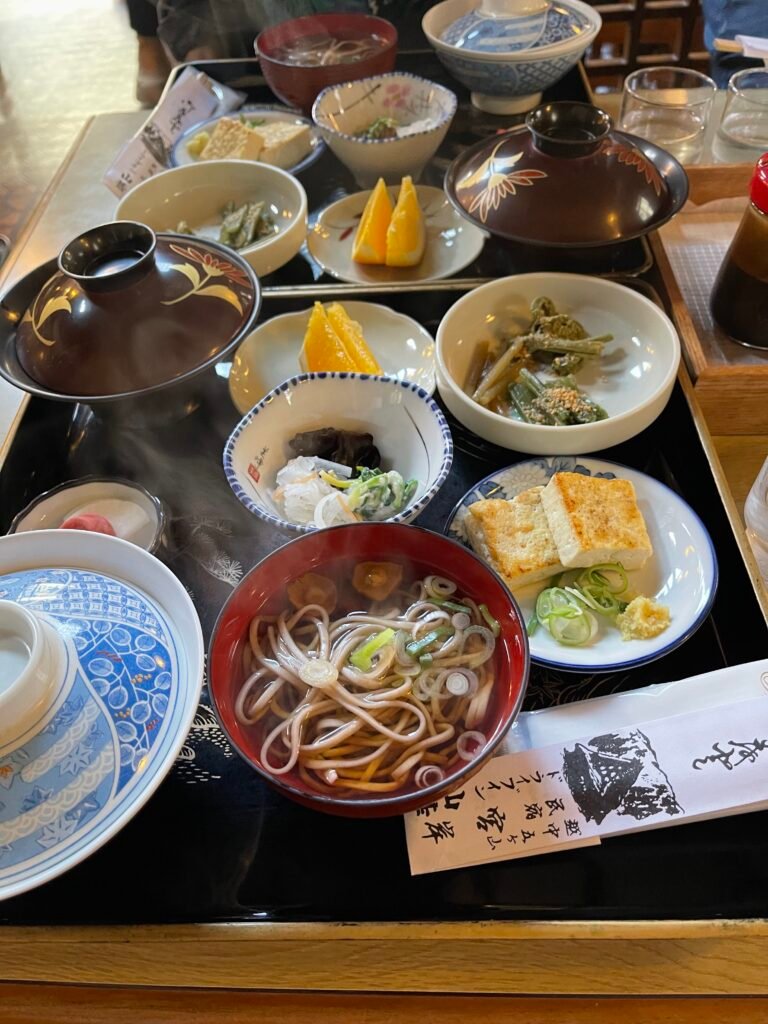
Delicious vegetarian fare
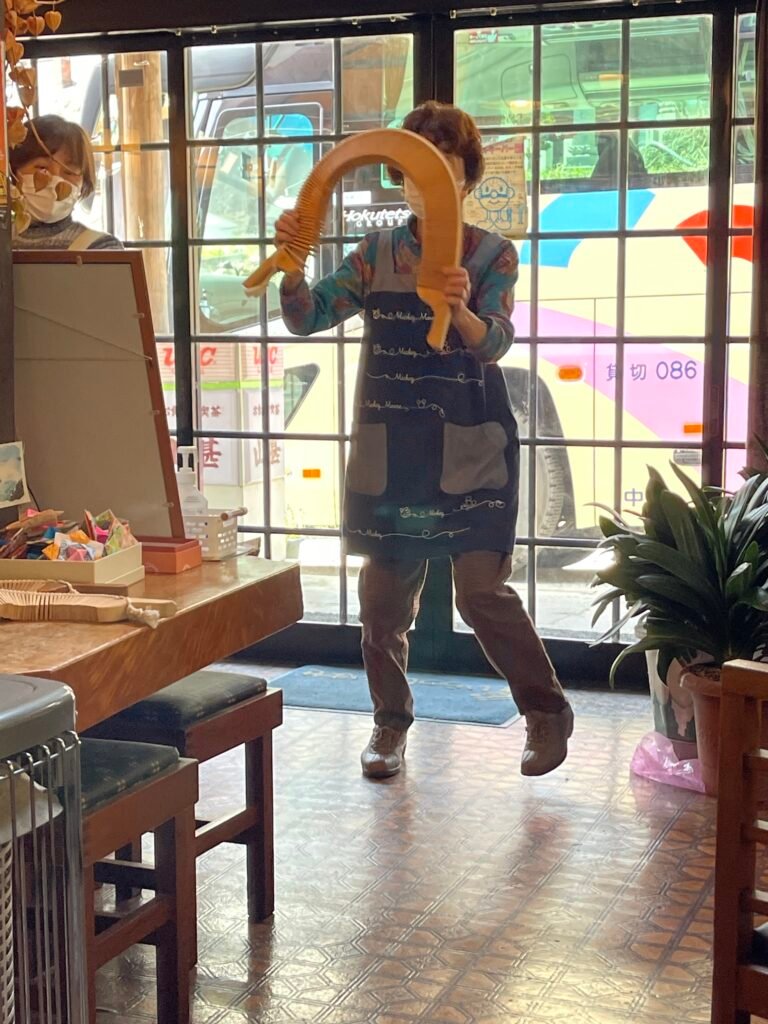
Dance performance with the Binzasara
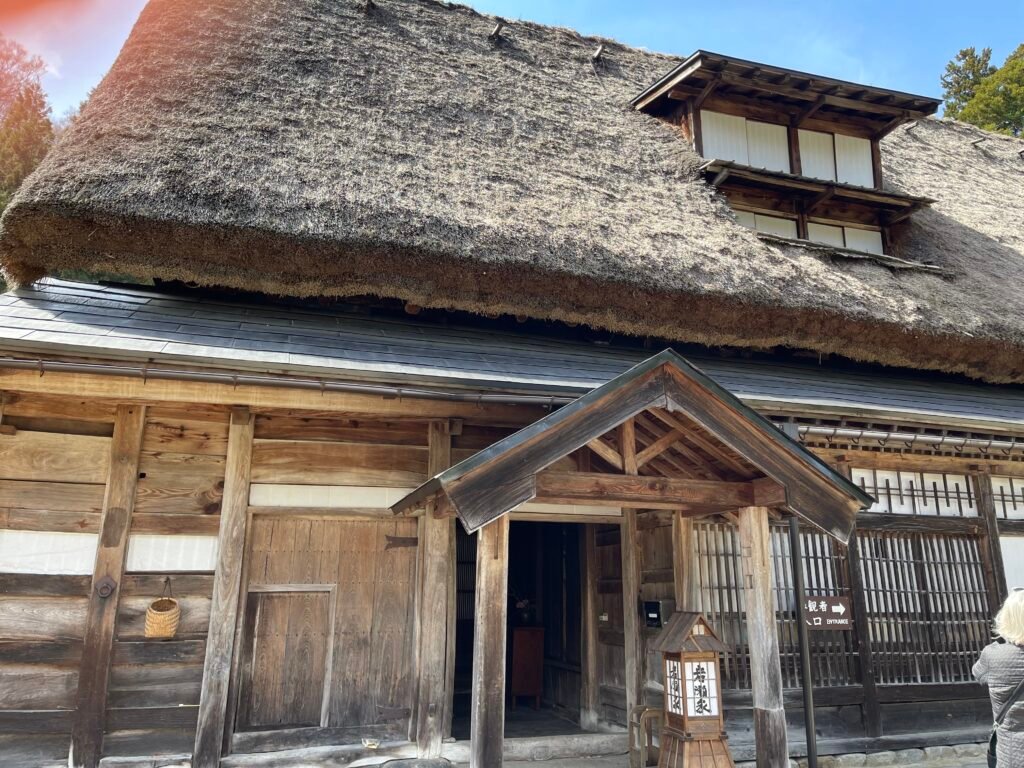
Murakami House
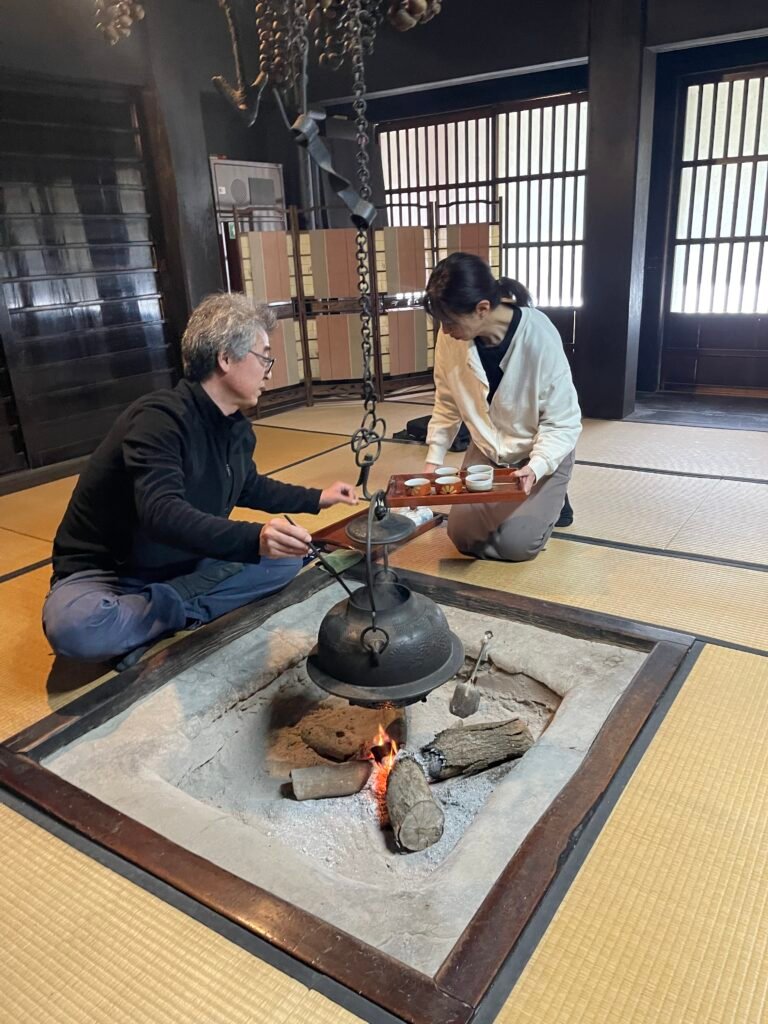
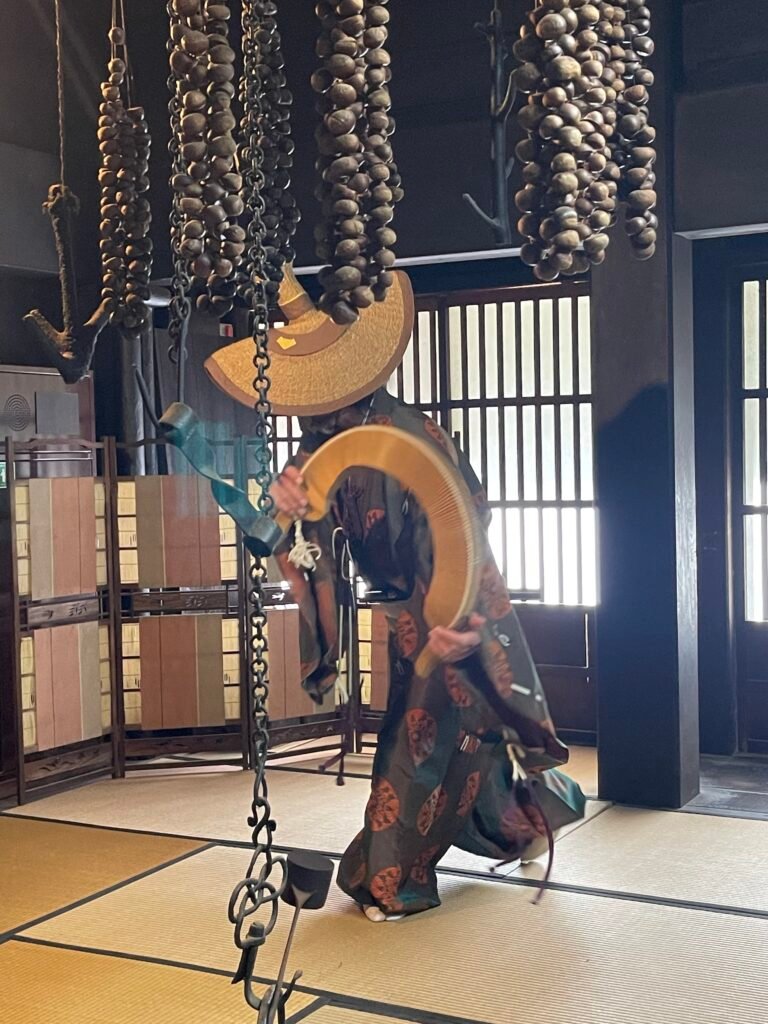
Dance performance
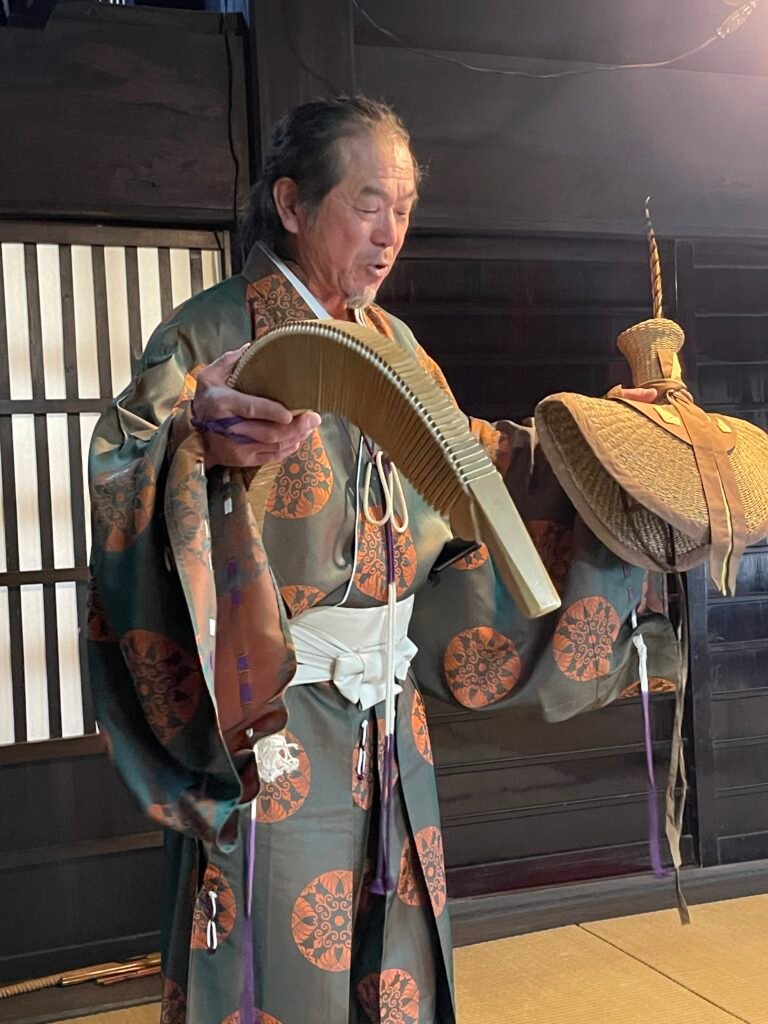
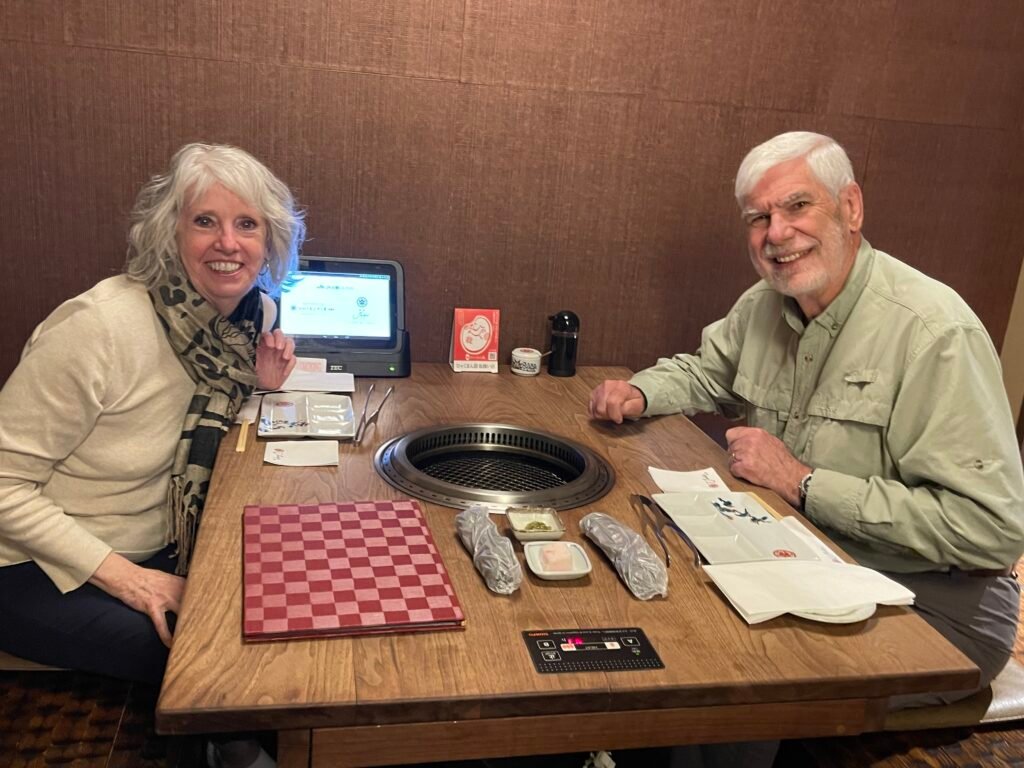
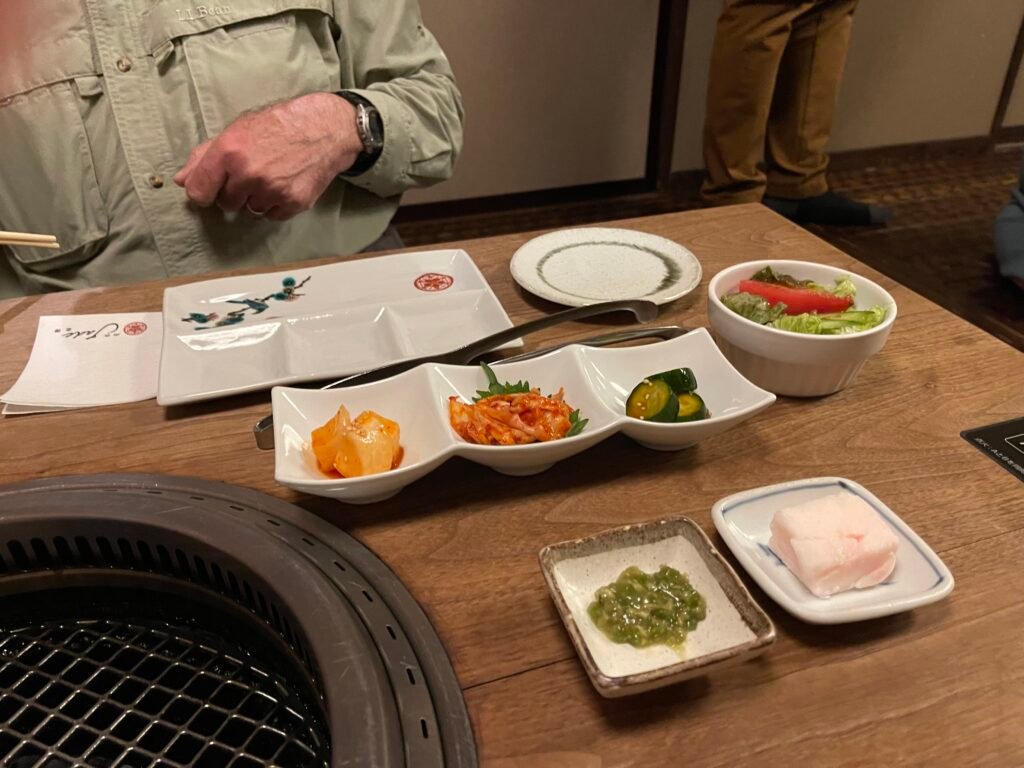
Dinner the BBQ place

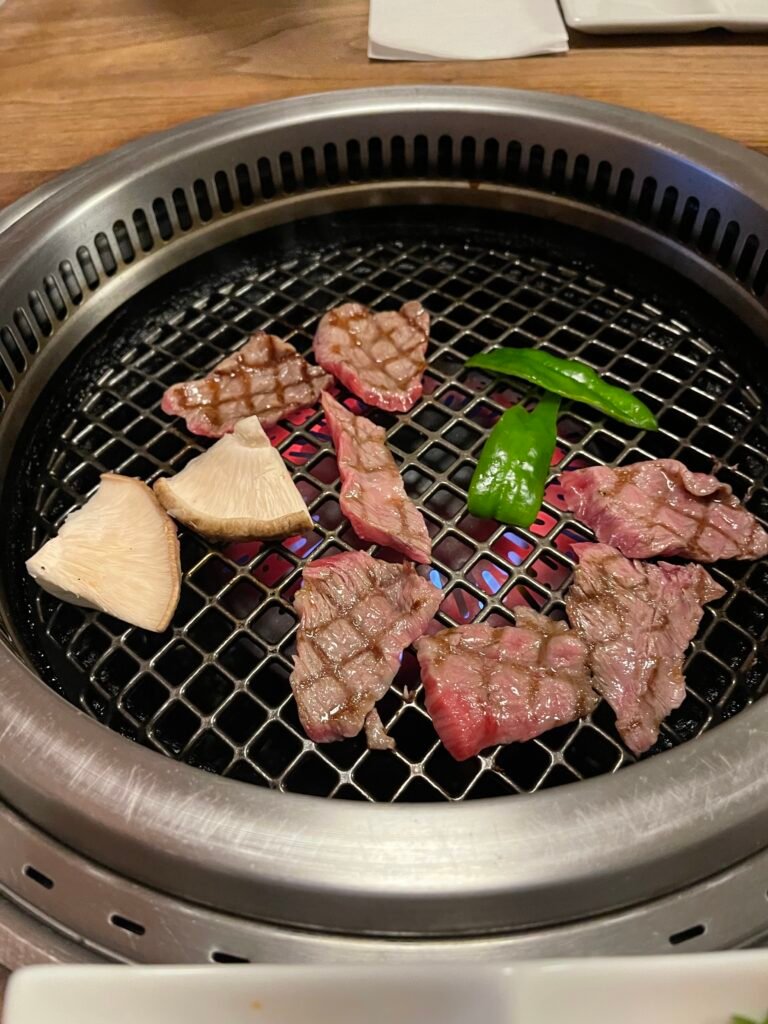
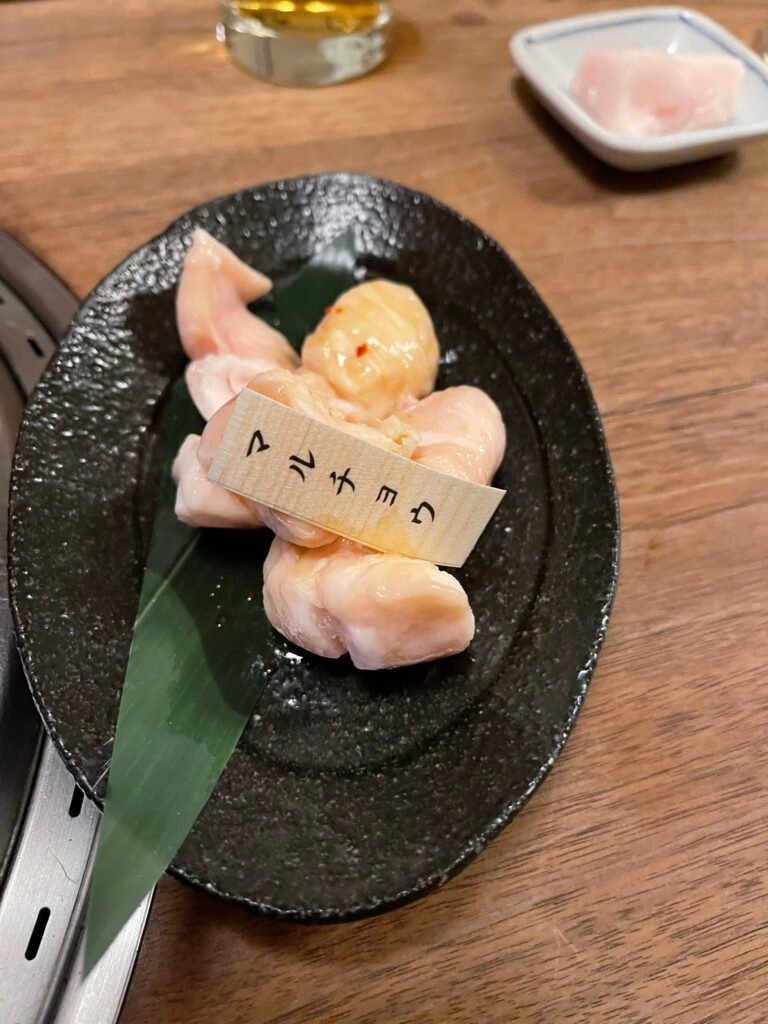
Intestines
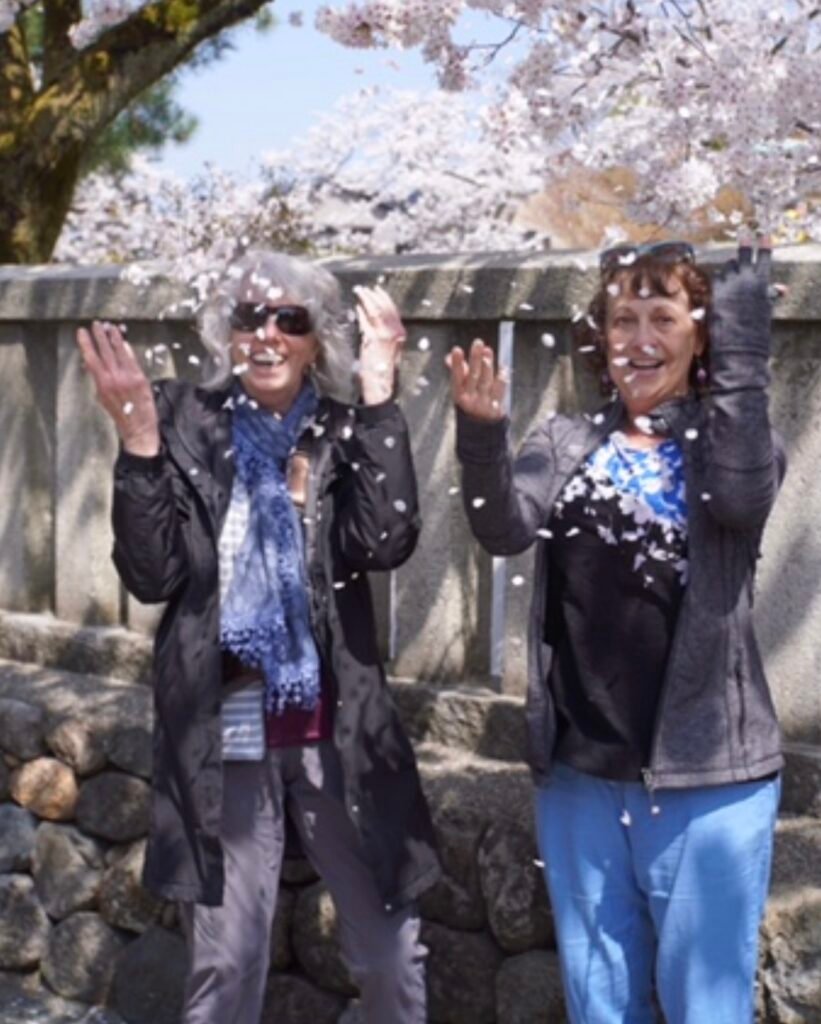
Throwing cherry blossom petals
